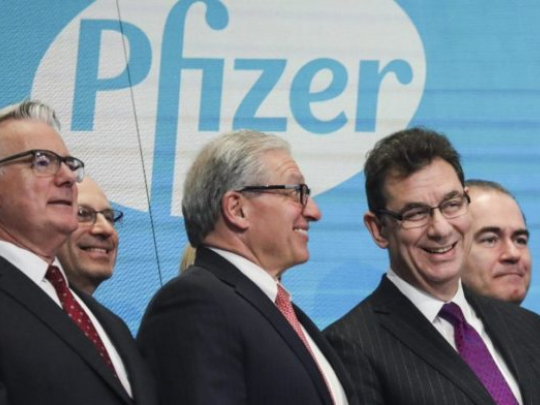Delta cloud over world economic growth

The general outlook of capitalist governments and their economic agencies has been that after the 2020 recession, induced by the COVID-19 pandemic—the deepest since the Great Depression of the 1930s—the global economy would return to a path of growth.
Despite the recent upturn in the major economic centres, this rosy scenario is now very much in question, because of the spread of the Delta variant of the virus.
This is the result of two factors. The first is the refusal of capitalist governments to take the necessary health measures to deal with the pandemic, because of their impact on profits. The second is “vaccine nationalism,” which has meant that many of the hardest-hit areas of the world have been cut off from supplies, allowing the coronavirus to develop more dangerous variants.
Last week, in its update on the state of the world economy, the International Monetary Fund (IMF) pointed to a significant division these policies have created within the global economy.
Over the past two decades and more, the so-called emerging and developing economies have been a key driver of global growth, outstripping the contribution made by the major economies. This has now turned around.
The IMF maintained its April forecast of 6 percent for global growth this year, but changed its prediction of where it would come from. It cut the forecast for emerging and developing countries by 0.4 percentage points for this year, to 6.3 percent. The Financial Times called this the “gloomier outlook” that was “worst in south-east Asia and south Asia, particularly India.”
At the same time, the IMF revised upward its forecast for growth in the advanced economies by 0.5 percentage points, to 5.6 percent.
“Vaccine access has emerged as the principal fault line, along which the global recovery splits into two blocs,” the IMF said. Some countries could “look forward to further normalisation of activity this year,” but many others “still face resurgent infections and rising death tolls.”
The IMF said recovery was not assured, even in countries where infections were currently very low, so long as the virus circulates elsewhere. That warning was confirmed within a week of being issued. The Delta variant continued to spread, including in countries with a relatively higher level of vaccinations.
The pandemic has been accompanied by higher levels of debt, and emerging market economies could face major problems if monetary conditions in the US begin to tighten. The IMF warned of a “double hit” to these economies, as a result of “worsening pandemic dynamics and tighter external financial conditions.” This would drag down global growth below its forecast.
In a blog comment on the latest update, IMF chief economist Gita Gopinath wrote that risks were tilted to the downside.
“The emergence of highly infectious virus variants could derail the recovery and wipe out $4.5 trillion cumulatively from global GDP by 2025,” she said. “Financial conditions could also tighten abruptly amid stretched asset valuations, if there is a sudden reassessment of the monetary policy outlook, especially in the United States. It is also possible that stimulus spending in the United States could prove weaker than expected.”
Figures released last week showed the US economy is now larger than it was before the pandemic struck. The economy grew at an annualised rate of 6.5 percent in the second quarter of 2021, slightly more than the annualised rate of 6.3 percent in the first. But this was well below the 8.4 percent that economists had forecast, and much lower than earlier predictions of a bounce-back of 10 percent and more.
As reported on CNBC, Action Economics chief economist Mike Englund wrote that the “speed limit” on the US economy, resulting from supply chain disruptions, was a “bit lower than we thought and quite a bit lower than most forecasters and government institutions were expecting.”
If the shortages continued, the likelihood was that the more optimistic forecasts for growth in the third quarter would need to be marked down as well, he said.
The prospects for the US economy will continue to be marked down, because of the resurgence of the pandemic due to the spread of the Delta variant, and the Biden administration’s refusal to take meaningful measures to deal with it.
The main component in the rise in US growth was an increase in consumer spending by 11.4 percent, fuelled by billions of dollars of fiscal stimulus. But this will begin the fade over coming months.
There appears to be considerable confusion in the financial press over the economic outlook. Last week, for example, one headline in the Wall Street Journal read: “The US Economy’s Prospects Looked Good, Until the Delta Variant Surged.” The following day a headline read: “World Economy Caps Extraordinary Return From COVID-19 Collapse.”
Growth rates in the eurozone have also started to rise, but here, as well, there is significant uncertainty.
Data released last week showed the eurozone economy grew by 2 percent in the second quarter of 2021, following a contraction of 0.6 percent in the final three months of 2020, and a further drop of 0.3 percent in the first quarter of this year. The better-than-expected result—economists had forecast 1.5 percent growth—was largely as a result of higher growth in Italy and Spain.
However, it was a different story in the two major economies of the 19-nation bloc—Germany and France. Germany, after recording a contraction of 2.1 percent in the first three months of the year, had been expected to expand its economy by 2 percent. But growth was only 1.5 percent.
France, the eurozone’s second largest economy after Germany, recorded growth of only 0.9 percent in the second quarter, after staying flat in the first.
In China, the world’s second largest economy, there is also considerable uncertainty. The official purchasing managers’ index for July, an important indicator of economic activity, dropped to 50.4, down from 50.9 in June. While it was still above 50, the level indicating the boundary between expansion and contraction, this was the weakest level since February 2020 when the economy was hit by lockdown measures at the start of the pandemic.
The Financial Times reported that the fall in the index reflected “rising inflation concerns, shrinking export growth and the effects of extreme flooding in parts of the country.”
On top of these issues, there is the effect of the crackdown by the Chinese government on so-called fintech companies, including the Ant Group of billionaire Jack Ma, the ride-hailing app Didi and the $100 billion tutoring industry. China’s central bank has called for further “rectification” of the fintech sector.
The crackdown, which is motivated, at least in part, by the regime’s political concerns over the growing power of some of the Internet giants, has put a cloud over future foreign investment in high-tech sectors of the Chinese economy. Chinese technology stocks listed in the US have had their worst month since the global financial crisis of 2008–09, with prices for the shares of two of the major Internet companies, Tencent and Alibaba, falling by around 16 percent and 10 percent respectively.
In a comment published in the Financial Times earlier this month, Ruchir Sharma, a global strategist at Morgan Stanley, warned that while economists expected a reopening boom in the coming months, the situation in China and the US, the world’s two largest economies, was reason to question its strength and length.
Sharma pointed to effects of the Chinese tech crackdown, noting that as the “old economy” industries of commodities and manufacturing had become “mired in debt and decay,” Chinese growth had been concentrated in the tech sector. He noted that since the crackdown began, the market capitalisation of the tech sector had fallen by one third, around $1 trillion.
As for the US, Sharma cast doubt on whether the consumer spending boom, sparked by government stimulus measures, would continue, noting that the Delta variant would add to consumer caution and that “after a stimulus sugar rush, growth tends to fall back quickly.”
“While the debate raging in financial circles focuses on whether the uptick in inflation will prove to be transitory, it is time to ponder the possibility that the economic boom will prove more transitory than expected.”
- Source : Nick Beams


















